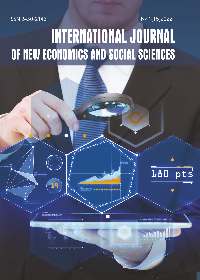THE POSTCOVID RISE IN INFLATION: COINCIDENCE OR THE RESULT OF MISGUIDED, EXCESSIVELY INTERVENTIONIST
AND MONETARIST ECONOMIC POLICIES
THE POSTCOVID RISE IN INFLATION: COINCIDENCE OR THE RESULT OF MISGUIDED, EXCESSIVELY INTERVENTIONIST
AND MONETARIST ECONOMIC POLICIES
Author(s): Dariusz ProkopowiczSubject(s): National Economy, Micro-Economics, Health and medicine and law, Financial Markets, Socio-Economic Research
Published by: Międzynarodowy Instytut Innowacji "Nauka - Edukacja - Rozwój"
Keywords: inflation; economy; macroeconomics; economic policy; state interventionism; sources of inflation; anti-crisis instruments of economic policy; economic growth; Polish economy;
Summary/Abstract: The economic crisis, which in 2020 was caused by the SARS-CoV-2 (Covid-19) coronavirus pan- demic, was mainly a downturn and recession of non-financial sectors of the economy, mainly re- sulting from the recession of service sectors covered by lockdowns. The previous mainly financial crisis occurred in 2007-2009. These crises had a different character and other anti-crisis interven- tionist actions were launched as part of monetary policy and/or fiscal, budgetary, social policy, etc. In 2021, the global economy began to recover efficiently from the economic crisis of 2020. On the other hand, in 2021 there was an increase in inflation as a result of excessively interventionist, monetarist anti-economic measures implemented as part of public financial aid offered during the pandemic to commercially operating economic entities. In 2022, the increase in inflation acceler- ated and there may be another significant slowdown in economic growth caused by economic sanc- tions imposed on Russia in connection with the war in Ukraine. The aforementioned war caused an increase in fossil fuel prices, energy prices, food prices and became another pro-inflationary factor. Central banks raise interest rates as part of anti-inflationary measures. However, inflation remains elevated. As a result, there were symptoms of a decrease in consumption and production, and en- terprises resigned from the implementation of previously planned business ventures and reduced the level of investments. The result may be the emergence of a deep economic downturn in 2023. In connection with the above, the following research questions arise: what were the original sources of inflation growth and what anti-crisis socio-economic policy should be applied by the govern- ments of individual countries to avoid stagflation in 2023?
Journal: International Journal of New Economics and Social Sciences IJONESS
- Issue Year: 16/2022
- Issue No: 2
- Page Range: 105-148
- Page Count: 44
- Language: English

